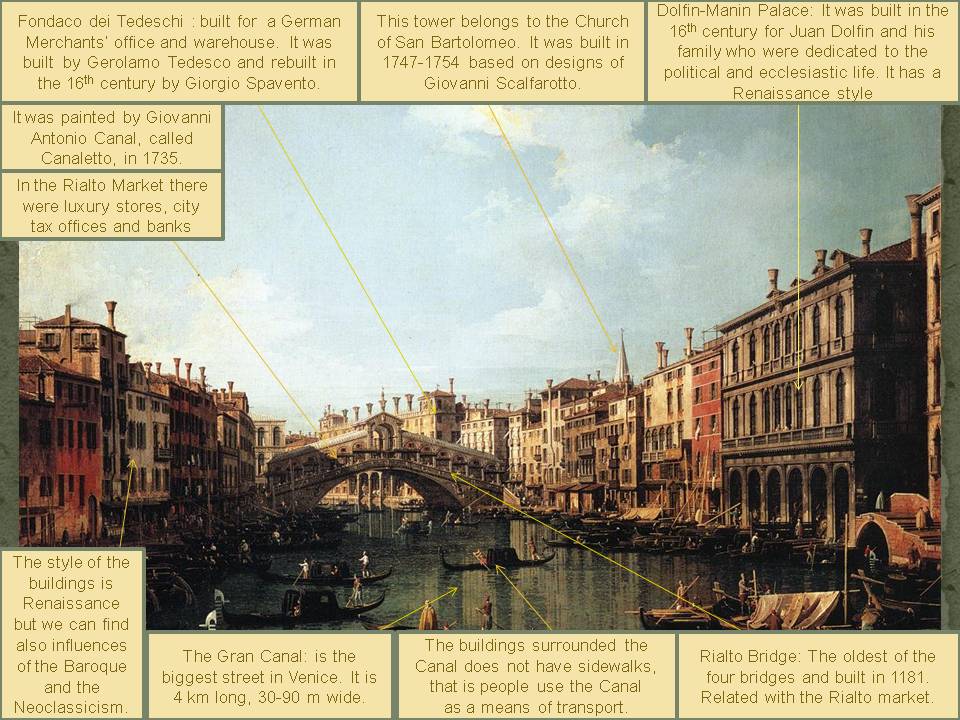VENICE (Canaletto, 18th Century)
This work of art is part of the Corsini Gallery in Rome, Italy. It was painted by Giovanni Antonio Canal, called Canaletto, in 1735. This painting is characteristic of the Vetusta style which is a very detailed painting method, usually of urban spaces or some other views. This style was developed over the 16th century and it had an important influence in Venetian painters. As we can see, the painter centered his attention in the different buildings, trying to represent the morphology of the city in detail. This city has an irregular plan because it does not have any system of organization. The streets have been built between the channels, so there are many alleyways and dead-ends. Further, we can say that this is the most important historical part of the city.
The name of Venice derives from the ancient Veneti people who inhabited the region by the 10th century and it is situated in the northeast of the country. It is the capital of Veneto region and it has a population of almost 272.000 inhabitants. We can consider it as an urban space because it is the social an economic center for surrounding villages. Nowadays this is a popular tourist destination, also the financial and commercial center, however it is not the industrial one, because factories are situated outside the city.
This painting portrays the Rialto Bridge as the main item, and the Gran Canal of Venice. This bridge is the oldest of the four that cross the Gran Canal of Venice and it was built in 1181. It is directly related to the Rialto Market (hence its name), that developed, both as a retail and as a wholesale market. On the sides of the bridge we can find two rows of shops. There were luxury stores, city tax offices and banks, so as we can see, the image represented daily activities.
The Gran Canal is the most important channel in the city. The buildings sourronded the Canal does not have sidewalks, that is people use the Canal as a means of transport. We can appreciate in the image, how people are using the gondolas like a transport. It is 4 km long, 30-90 m wide, with an average depth of five meters.
Regarding the buildings we can remark two of them. Firstly, we can see in the image, a part of the Fondaco dei Tedeschi, which was built as the German Merchants’ office and warehouse, in the 13th century by Gerolamo Tedesco. This building was destroyed in a fire so it was rebuilt in the 16th century by Giorgio Spavento. We can see that it is situated behind the bridge. The other important building is the Dolfin-Manin Palace and, in the image, we can find it at the right side of the channel. It was built in the 16th century for Juan Dolfin and his family who were dedicated to the political and ecclesiastic life. The structure of the palace has a clear Renaissance style although it has had later modifications.
Finally, we can see on the right side of the picture a tower which belongs to the Church of San Bartolomeo, in Venice. It was originally dedicated to Saint Demetrius of Thessaloniki and founded in 830. In 1179 it became a church of the German community. The bell tower, that we can see in the image, was built in 1747-1754 based on designs of Giovanni Scalfarotto.
In addition, the urban space seems like a good neighborhood where whealthy people lived with possibilities and it is situated in the center of the city. The predominant style of the buildings is Renaissance but we can find also influences of the Baroque and the Neoclassicism styles.
Ana Rus Bellvis Santos

